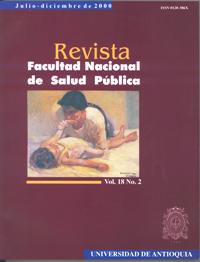La educación del futuro a través de un espejo
DOI:
https://doi.org/10.17533/udea.rfnsp.996Abstract
El primer colombiano que viajó al Japón en el siglo pasado fue un bogotano de nombre Nicolás Tanco Armero. Su travesía consta en un relato de 298 páginas lleno de apuntes sobre lo que encontró “parecido” o “distinto” de lo nuestro. De su llegada al puerto de Yokohama, por ejemplo, escribe: “En pocos minutos rodearon el vapor infinidad de botes, sorprendiendo mucho el traje de los remeros, que sólo llevan una bata larga y usan moño sostenido por peinetas, exactamente como las mujeres. Los congos o lanchas de carga los manejan hombres desnudos, parecidos a nuestros antiguos bogas, sólo que tienen todo el cuerpo cubierto de dibujos que se hacen con pólvora, picándose la piel con agujas como los marineros. Poco debe abrigarles esta capa artificial, y los hace aparecer como unas higuanas [sic] o lagartos humanos”.
Yo recuerdo haber llegado al Japón en una tarde de invierno de los últimos días de febrero de 1961 en uno de los primeros jets que cruzaron el Pacífico. Me sorprendió que, cuando el automóvil en que veníamos desembocó desde la autopista en una calle estrecha, los gigantescos buses parecieron lanzarse derecho a masacrarnos en un país cuyo tráfico yo ignoraba que se movía por la izquierda. Este fue sólo el comienzo de una serie de impresiones con las cuales llené mis primeras cartas. El arroz masacotudo se comía en tazas y no tenía ni una pizca de sal. Las verduras se servían en platicos alargados y había que cogerlas con palitos. El té no era rojo o anaranjado y no se tomaba con azúcar. El atún se servía crudo en tajaditas adornadas con ramos de perejil. En las casas se caminaba descalzo sobre bastidores de paja trenzada. Las puertas corredizas eran de cartón y las ventanas tenían celosías de papel. El baño se hacía en un tonel de agua hirviendo en el que se sumergía toda la familia. La calefacción consistía en un brasero colocado debajo de una mesa baja, cubierta con una manta bajo la cual todos metían las manos y las piernas. Los edredones de la cama se extendían sobre el suelo antes de acostarse y la almohada se parecía a un rollo relleno de cascarilla de arroz. Todas estas maneras, sin embargo, dejaron de ser extrañas con el tiempo. Todas ellas habrían de revelarme en su momento, una dimensión más profunda, que creo no ser diferente de lo que modernamente llamamos “historicidad”.
Downloads
Downloads
Published
How to Cite
Issue
Section
License
The contents of the articles are the responsibility of the authors
The editorial committee has editorial independence from the National School of Public Health "Héctor Abad Gómez" of the University of Antioquia.
The editorial committee is not responsible for aspects related to copying, plagiarism or fraud that may appear in the articles published in it.
When you are going to reproduce and disclose photographs or personal data in printed or digital format, informed consent is required. Therefore, this requirement is required of the author at the time of receipt of the manuscript.
Authors are responsible for obtaining the necessary permissions to reproduce any material protected by reproduction rights.
The authors preserve the moral rights and assign the economic rights that will correspond to the University of Antioquia, to publish it, distribute electronic copies, include them in indexing services, directories or national and international databases in Open Access, under the Creative Commons Attribution license -Not Commercial-Share Equal 4.0 International Commercial (CC BY-NC-SA) which allows others to distribute, remix, retouch, and create from the work in a non-commercial way, as long as the respective credit and license are granted. new creations under the same conditions.
The authors will sign the declaration of transfer of economic rights to the University of Antioquia, after the acceptance of the manuscript.
The editorial committee reserves the right to reject the articles whose authors do not offer satisfactory explanations about the contribution of each author, to meet the criteria of authorship in the submission letter. All authors must meet the four criteria of authorship according to ICMJE: "a) .- That there is a substantial contribution to the conception or design of the article or to the acquisition, analysis or interpretation of the data. b) That they have participated in the design of the research work or in the critical review of its intellectual content. c) .- That has been intervened in the approval of the final version that will be published.d). That they have the capacity to respond to all aspects of the article in order to ensure that issues related to the accuracy or integrity of any part of the work are adequately investigated and resolved. "












 --
--  --
--
